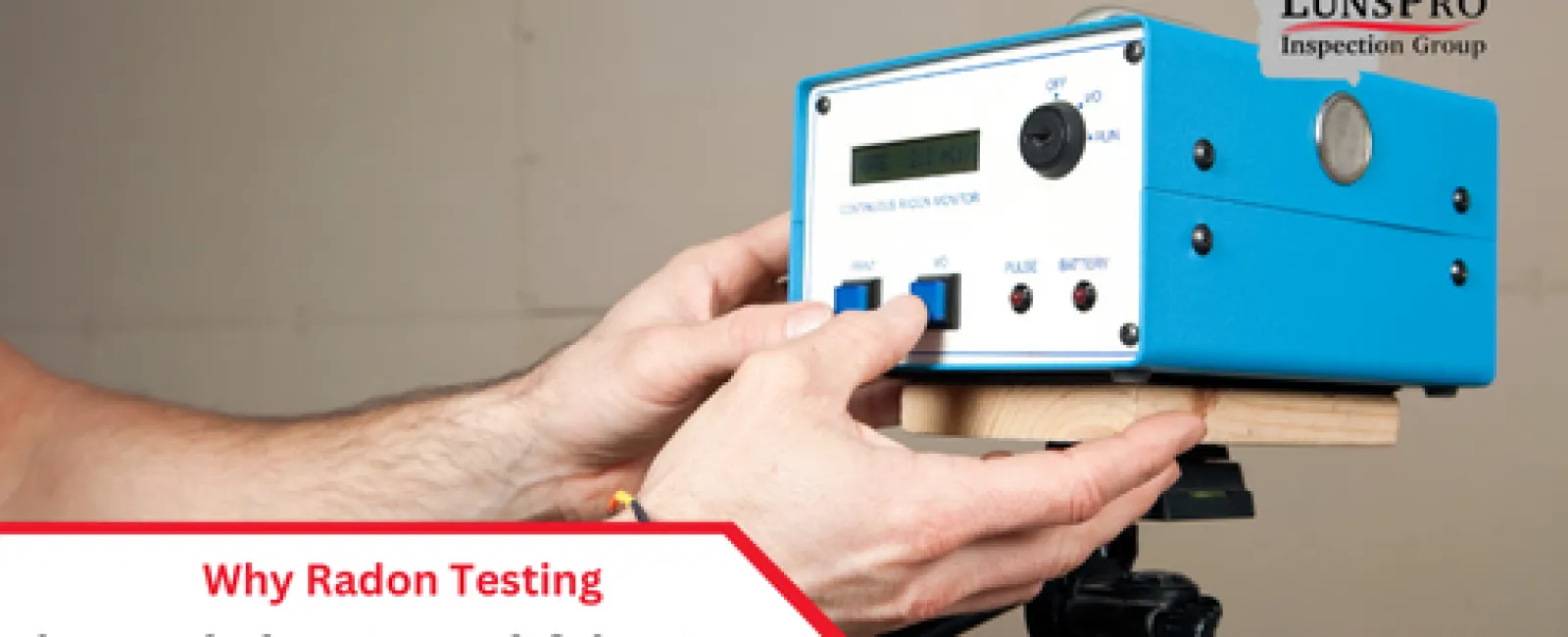Radon is a naturally occurring radioactive gas that is both colorless and odorless, making it an invisible threat to homeowners. While radon is present in the environment year-round, winter is the most crucial time to conduct radon testing. During the colder months, homes are sealed tightly to conserve heat, leading to reduced ventilation and an increased risk of radon accumulation. For homeowners and potential buyers, understanding the importance of winter radon testing is essential in ensuring a safe and healthy indoor environment.
LunsPro Inspection Group specializes in providing Atlanta residential and commercial inspections, including comprehensive Atlanta home inspections, to help homeowners detect and mitigate radon risks. Given that radon exposure is the second leading cause of lung cancer in the United States, taking proactive steps to test and mitigate radon levels during winter can be a lifesaving decision.
Many homeowners may not realize that radon levels fluctuate seasonally. While levels may be lower in the summer due to increased airflow and open windows, they tend to spike during winter due to closed conditions that trap the gas inside. This seasonal fluctuation underscores why radon testing is particularly important in colder months. Whether you're a homeowner, a homebuyer, or a real estate professional, understanding the risks and benefits of winter radon testing is key to protecting yourself and your family.
What Is Radon and Why Is It Dangerous?
Radon is a radioactive gas that forms naturally when uranium in soil, rock, and water breaks down. It seeps into homes through foundation cracks, gaps around pipes, and other entry points. Once inside, radon can accumulate to dangerous levels, particularly in basements and lower floors where ventilation is limited.
The primary health risk associated with radon exposure is lung cancer. The Environmental Protection Agency (EPA) and the Centers for Disease Control and Prevention (CDC) both recognize radon as a significant health hazard, attributing approximately 21,000 lung cancer deaths each year in the U.S. to radon exposure. Smokers are at an even higher risk when exposed to radon, as the combination of smoking and radon inhalation greatly increases the likelihood of lung cancer.
Why Winter Is the Best Time for Radon Testing
1. Homes Are Sealed Tightly
During winter, homeowners keep their doors and windows closed to maintain indoor warmth. This limited ventilation creates an environment where radon gas can become trapped, leading to higher concentration levels inside the home. Testing during winter provides a more accurate measurement of the highest potential radon levels present in a home.
2. The Stack Effect Increases Radon Levels
The stack effect is a phenomenon where warm air inside a home rises and escapes through the upper levels, creating negative pressure in lower levels such as basements and crawl spaces. This negative pressure pulls radon from the ground into the home at an accelerated rate, increasing exposure risks. Testing radon levels in winter accounts for this seasonal effect, giving homeowners the most accurate representation of their home's radon risk.
3. More Time Spent Indoors
Winter forces people to spend more time indoors, increasing prolonged exposure to radon. Since radon is a long-term health risk, it's critical to test in winter when people are more likely to breathe in higher concentrations of radon over extended periods.
4. Basements Are More Frequently Used
Many homes utilize basements as additional living spaces, offices, or storage areas. Because radon typically accumulates in lower levels of a home, testing during winter when basements are used more often ensures accurate detection and allows homeowners to take the necessary mitigation steps if needed.
How to Conduct Radon Testing
1. Short-Term vs. Long-Term Radon Tests
Radon testing is available in two primary forms: short-term and long-term tests.
Short-term tests typically last between 2 to 7 days and provide a quick snapshot of radon levels. They are useful for homeowners who need immediate results, such as those buying or selling a home.
Long-term tests measure radon levels over 90 days or more and provide a more accurate assessment of a home's year-round radon exposure.
LunsPro Inspection Group recommends using a combination of both tests for the most reliable results, particularly in areas where radon exposure is known to be high, such as in Atlanta home inspections.
2. Proper Placement of Radon Detectors
For accurate radon testing, detectors should be placed in the lowest livable area of the home, such as a basement or first floor. Avoid placing them near windows, doors, or vents, as these areas can skew test results by introducing outside air.
3. Hiring a Professional Radon Testing Service
While DIY radon test kits are available, professional radon testing services provide the most reliable and precise results. Certified inspectors from LunsPro Inspection Group use advanced radon detection equipment to ensure accuracy and compliance with EPA guidelines. Professional testing also eliminates errors that can arise from improper placement or handling of DIY kits.
Radon Mitigation Strategies
If test results indicate high radon levels (4.0 pCi/L or higher), homeowners should take immediate action to reduce exposure. Common radon mitigation techniques include:
Active Soil Depressurization (ASD) - The most effective mitigation method, ASD uses a vent pipe and fan system to pull radon from beneath the home's foundation and release it outside.
Sealing Entry Points - While not a standalone solution, sealing foundation cracks and gaps around pipes can help reduce radon infiltration.
Improving Ventilation - Increasing airflow and using radon-resistant construction techniques in new homes can help prevent radon buildup.
Installing a Heat Recovery Ventilator (HRV) - HRVs improve air exchange rates and can reduce radon concentrations by diluting indoor air with fresh outdoor air.
Radon exposure is a serious health risk that should not be ignored, especially in winter when homes are sealed tightly, and radon levels are at their highest. Conducting radon testing during the colder months provides a more accurate representation of a home's radon risk and helps homeowners take the necessary steps to protect their families.
LunsPro Inspection Group, a trusted provider of Atlanta residential and commercial inspections, including Georgia home inspections, offers professional radon testing services to ensure that homes remain safe year-round. Whether you are a homeowner, a homebuyer, or a real estate professional, understanding the importance of winter radon testing can make all the difference in ensuring a healthy indoor environment.
By taking proactive measures, such as testing for radon and implementing mitigation strategies, homeowners can significantly reduce the risks associated with radon exposure. Don't wait until it's too late—schedule a radon test this winter and take control of your indoor air quality today.

